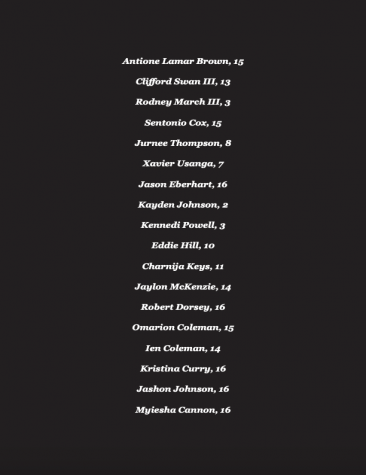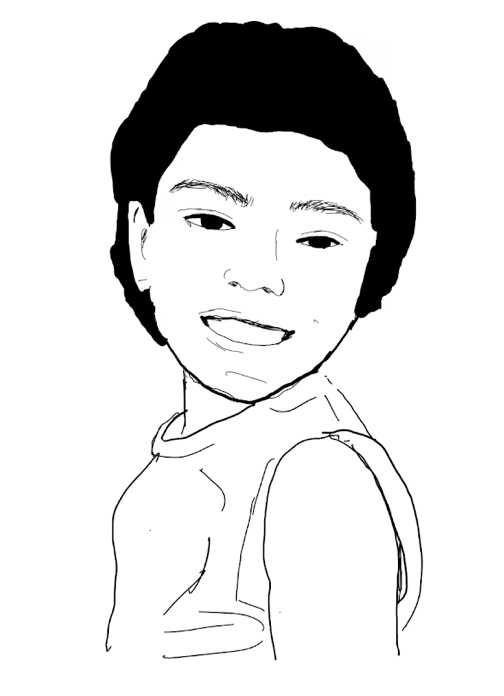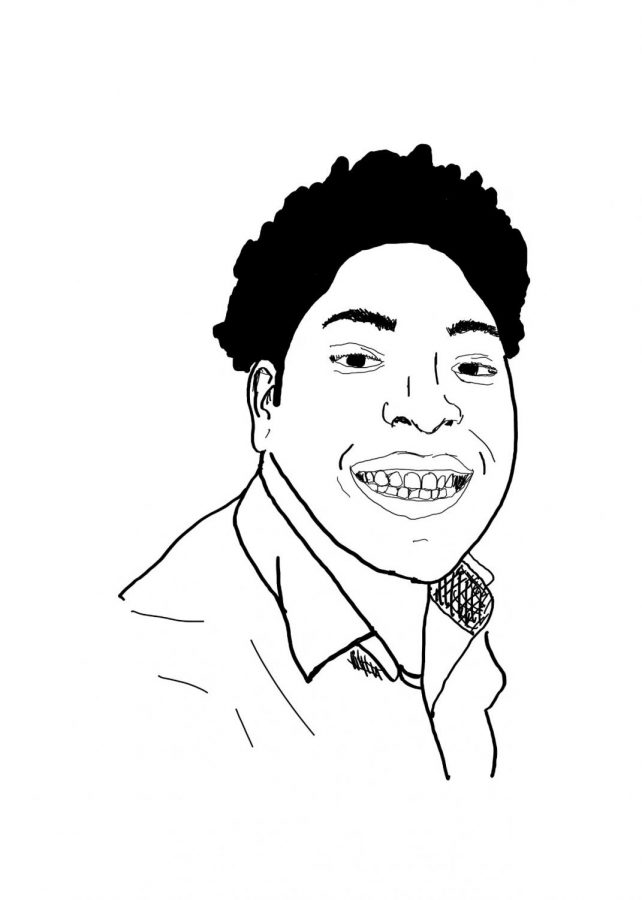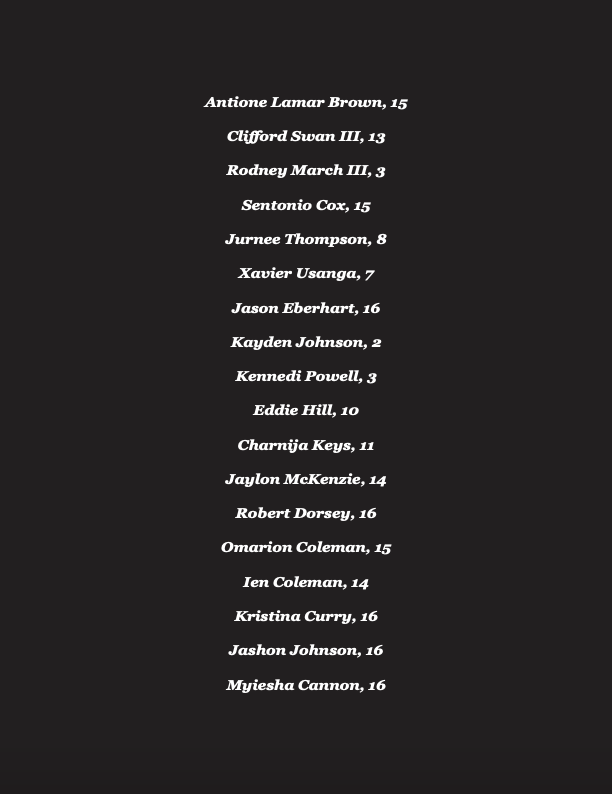An Epidemic: Gun Violence in St. Louis
Introduction
On the night of Dec. 14, 2012, when parents should have been out shopping for the holidays and grabbing the week’s groceries, they instead found themselves gathered at the local firehouse, searching a crowd of faces for their children.
That day at Sandy Hook Elementary school, 20 children between the ages of six and seven, as well as six staff members, were shot and killed.
The atrocity of this event sparked outrage nationwide. Then-President Barack Obama wrote and delivered a televised speech hours later. There were immediate calls on Congress to pass new gun control measures. The website of advocacy group the Brady Campaign to Prevent Gun Violence crashed due to a sudden influx of donations.
In the following months, some states, such as New York, Connecticut and Maryland, passed bills restricting the purchase and use of guns. However, both the assault weapons ban and the background check bill that were subsequently introduced to Congress were defeated by the Senate.
Contrary to the messages being sent by those lobbying for gun restriction measures, leaders of the National Rifle Association argued that gun-free school zones would attract shooters and that armed police officers should be hired to protect schools.
Since Sandy Hook, there have been at least 2,237 mass shootings in the US.
However, these statistics do not come close to accounting for the acts of gun violence that are typically less publicized and occur on a much more frequent basis.
Every day, an average of 100 Americans are killed by guns. In a single year, that number reaches 36,383 deaths, along with 100,120 injuries. Fatal shootings are typically isolated events, one-third of which are gun homicides. Victims of gun homicide are 10 times more likely to be African-American than white. In some cases, the victims of these shootings are not those that were intended.
This is the story of some of the 18 St. Louis children who have died by gun violence since May of 2019.
According to St. Louis Mayor Lyda Krewson, many of these homicides have to do with drugs.
“There’s a tremendous amount of gun violence in our city, and it is tied to drugs, almost entirely,” Krewson said. “This summer, there were six kids under 11 killed, and those kids were doing nothing wrong. Those kids were not the intended target, other folks that they were around were the target. How do we know [these shootings] are drug-related? Because there are drugs at the scene. There are guns at the scene. There’s cash at the scene. This is all related … This year, the county has had a couple of small children, 10 and under, killed, and the city has had six: a 2-year-old, a 3-year-old, a 7-year-old, an 8-year-old and two 10-year-olds. So obviously that’s horrible.”
Krewson contends that the drug industry in St. Louis is “almost self-policing” in that many shootings are retaliatory and can initiate a vicious cycle of violence. The fear that this system generates also prevents those who may have information about shootings from reporting what they know to law enforcement.
“We offered a $25,000 reward for information leading to the arrest of anyone involved in [the murders of these kids] and we have not gotten tips about it,” Krewson said. “Even though there were people around the scene who know who likely did that shooting. We don’t get those tips. So you can bet that those shootings will cause more shootings.”
If the pattern that Krewson described is perpetuated, children in the city of St. Louis will continue to fall victim to this cycle. Most of the minors that died by gun violence this summer were struck by stray bullets fired in conflicts they weren’t even old enough to understand.
They might have been walking with friends, sitting on their porches, playing a game outside, or even eating at their kitchen table when they were shot.
Democratic Missouri Representative Alan Green, who was also a St. Louis police officer during the ‘80s and ‘90s, encountered many shootings associated with gangs throughout his time on the force. Similar to Krewson, he saw a connection between an increase in drugs traded in these groups and the number of fatal shootings in the city, and believes that the children who have been shot were simply in the wrong place at the wrong time.
“What I mean by that is a stray bullet,” Green said. “It might be an incident similar to the 8-year-old that got killed. He was out playing and a guy was shooting. That disturbs me. At the football game where people got shot, those were stray bullets that hit two adults, and I think two children. These are the kind of things that bother me too. Safety in the city, we’re talking about gunfire period, and those stray bullets killing kids. That is just not right. A kid should have the right and benefit to play outside without being worried about stray bullets. And parents too.”
While legislators are aware of the many circumstances of gun violence in St. Louis, the people that likely have the most personal insight are those who have direct experience with victims. Lauren Sucher-O’Grady, an ER doctor, and Melissa Puffenbarger, a pediatric emergency doctor, have tended to many people caught in gunfire.
“I would say that was a fairly frequent occurrence when we worked at Children’s. At least once a week we’d have a kid come in with a gunshot wound. Sometimes they were older, sometimes they were self-inflicted, sometimes they were part of gang violence or drugs. But the hardest ones were the little kids who were just kind of caught in the crossfire,” Sucher-O’Grady said.
Unsecured weapons within a home environment are also a major cause of pediatric gun injuries and deaths. In many cases, parents in possession of these weapons are unaware that their children know where the guns are stored and how to gain access to them.
A 2015 survey by the US National Library of Medicine found that one in three American households possess guns, regardless of the presence of children.
Among those households, only three in ten firearms were stored in “the safest manner.”
“When we talk about unintentional wounds, it’s not just that there was another target and the child was struck inadvertently, but it can be because they live in an unsafe environment or maybe somebody in the home is involved in some sort of criminal activity and they have unprotected loaded weapons in the house. Children explore, part of their normal behavior is to go find things and play with them, look at them, put them in their mouth. A lot of our unintended pediatric victims are finding loaded weapons in their home,” Puffenbarger said.
According to Sucher-O’Grady, people who are shot once in their lifetime are at a much higher chance to be shot multiple times, likely due to gang affiliations or living in a neighborhood that puts them at a greater risk for bystander gun violence.
Both Sucher-O’Grady and Puffenbarger agreed that further gun control measures and support systems could work to diminish this ongoing cycle.
“We have to try to see what we can do to remove what spurs on violence,” Puffenbarger said. “Low income, desperate situations, lack of social support, ongoing violence, that’s one way to target it. But we also need legislation. We want gun control. Not gun removal, control. And it’s hard to get that through our legislation. Because depending on what state you live in, you may have political parties that feel very strongly that in no way shape or form is mandating control over guns an appropriate thing to do, because that’s too much of an infringement on your rights.”
Green also acknowledged that a decrease in gun control has caused acts of violence to change over time. During his tenure as a police officer, he saw many instances of individual shootings in which only one or two people were injured. While these types of shootings are still very prominent today, the shootings that receive more attention are on a completely different scale.

“All those assault weapons were banned back then, now assault weapons are not banned. That’s two different things… We’re not only talking about the guns or the weapons in St. Louis, we’re talking about these mass shootings that occur all over on a weekly basis. We’ve got anywhere from three to six to 12 to an even higher number of people going in and using handguns, assault rifles, anything they can to shoot numerous people. It’s not like one or two, it’s a group of people being shot today. And that is something that we have never seen before,” Green said.
In January of 2017, it became legal to carry a gun in the state of Missouri without a permit. With the exception of felons, citizens can be armed with assault weapons without being questioned by the police.
This legislation amplifies the sense that injury or death by gun violence is unavoidable for vulnerable populations in the city of St. Louis.
“I’ve talked to parents with teenagers or people in their early 20s whose sons or daughters have gotten shot,” Sucher-O’Grady said. “The reaction is variable. But a good number of them weren’t surprised, although they were devastated and sad. They weren’t angry or surprised, they just knew this was coming. They knew that it was only a matter of time before they lost their son or daughter, because of getting into gangs or drugs or that sort of thing. They have to live knowing that [their child] is going to get shot and killed, that’s how they’re going to die and they’re going to have to bury them. That’s hard. And that’s the reality for a lot of people in this city.”
Profiles



